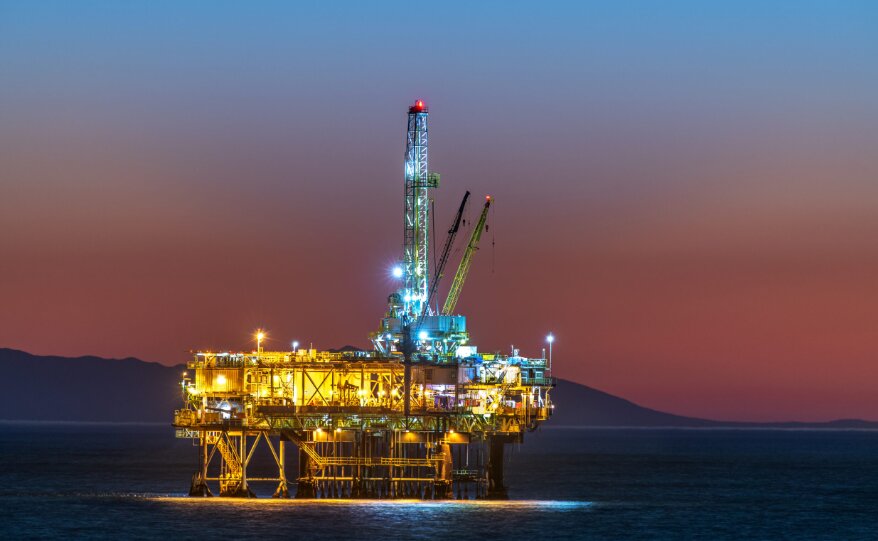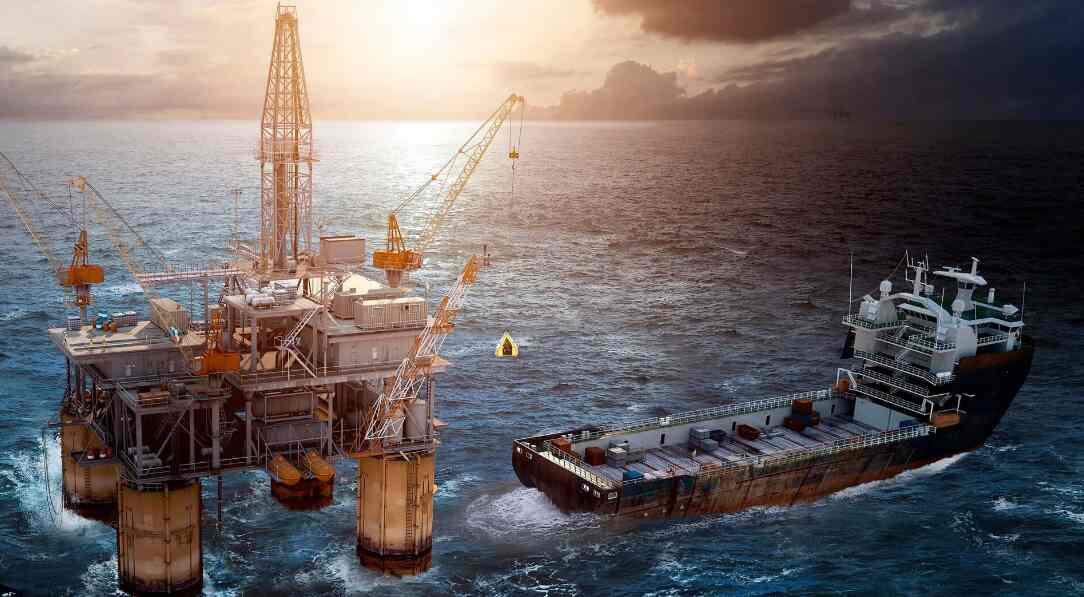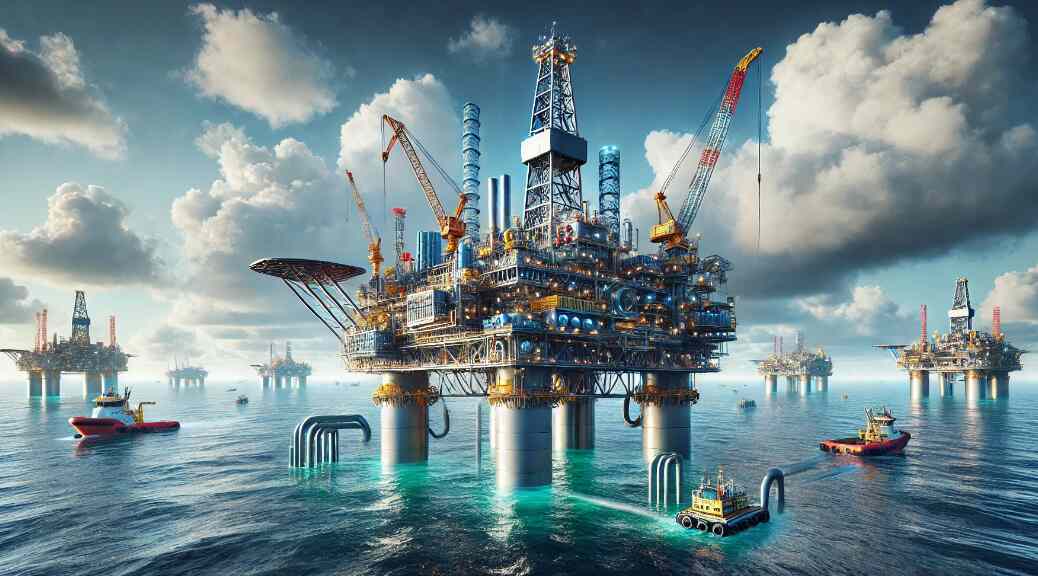Due to technological advancements over the last couple of decades, there has been extraordinary access to resources in the deep ocean. Deep offshore technology therefore provides the driving force in this respect to have activities taken out to an environment in the ocean that was previously unreachable. Additional applications include everything from deep-sea exploration to offshore drilling, with technologies generally aimed at industries related to the production of energy. In such a world where energy resources are in increasing demand, deep offshore technology remains vital in many ways to meeting global growth in such resource demands. This paper provides an overview of deep offshore technology, applications, challenges, and the future outlook of this key field.
Table of Contents
ToggleDeep Offshore Technology
The Deep offshore technology includes those tools, equipment, and methods that find application in the general exploration and exploitation of ocean resources beyond a water depth of 500 meters in particular. The sea floor over these areas is nearly unknown at high pressure and extreme temperatures, which conditions pose serious difficulties to operate. It basically allows companies to explore and extract resources like oil, natural gas, and minerals from the ocean floor. Deep offshore technology has integrated advances in engineering, robotics, and data science to operate in such hostile environments.
Must read Delta V-Tech Fence Installation Instructions: Complete Guide.
Types of Deep Offshore Technology
Deep offshore technology includes all types of equipment and systems designed to resist very extreme conditions underwater. The major components incorporate:
Remotely Operated Vehicles (ROVs)
ROVs are robotic submersibles controlled from the surface through remote control. The main equipment on these pieces of machinery includes cameras, sensors, and manipulators-robotic arms-through which the operator can view underwater conditions while undertaking undertakings such as inspection, maintenance, and data acquisition. ROVs form a very important aspect of deep-sea exploration because they can be put to work at greater depth and pressure than humans.
Subsea Production Systems
Subsea production systems are designed to directly extract and process oil and gas resources from beneath the seafloor. Such systems involve wells, pipelines, and units for processing, all connected together to function at deep-sea levels. One of the major advantages of subsea systems is that they minimize surface facilities, which often prove considerably hard and expensive to establish in deep waters.
Floating, Production, Storage and Offloading (FPSO) Units
The FPSOs are vessels floating in the sea that store and process oil and gas extracted from offshore fields. Such installations have been found very useful in areas where it is not possible to provide permanent infrastructure. Oil and gas produced on the seabed are piped to the FPSO for processing and storage before being transferred into transport vessels.
Subsea Pipelines and Umbilicals
Subsea pipelines and umbilicals are essential links in the transportation of oil, gas, and electricity from offshore facilities back to onshore processing plants. In this regard, umbilicals carry control, electrical, and communication lines to underwater equipment, enabling operators to conduct operations and monitor activities from the surface.
Platforms of Drilling and Production
These are built on the surface and braced to the ocean floor to create drilling and production operations in deep waters. There are many types of platforms for conducting such operations, and they include fixed platforms, semi-submersible platforms, and spar platforms. A type of platform is chosen according to water depth and other environmental conditions.

Energy Production Applications of Deep Offshore Technology
Deep offshore technology is best known in the oil and gas industries, where it has opened up resources that hitherto were unexploited.
Offshore Drilling
The oil and gas reserves buried deep beneath the ocean floor form part of the most valuable sources of energy supply in the world. Drilling at these depths basically means making a well through the ocean floor to reach the resource reserves. Such a resource can be exploited by companies using advanced drilling techniques in order to increase their income without significant risk regarding possible leakages or accidents.
Natural Gas Extraction
Most times, in addition to the reserves of oil, there are associated natural gas reserves found offshore. Through deep offshore technologies, these companies explore natural gas from such reserves, then process and transport the same to land-based facilities. Companies can carry out this transporting efficiently with floating production systems, using pipelines, even in the most remote areas offshore.
Renewable Energy Projects
Deep offshore technology also started to contribute to renewable energy production beyond the basic fossil fuel resources. Offshore wind farms continue to be installed in deep-water locations where they have consistent wind speeds and make them much more efficient. Marine energy from ocean currents and tides presents another renewable resource prospective that could be widely realized with further technological advances.
Deep Offshore Technology Operational Challenges
Operating in deep offshore areas is simultaneously fraught with several challenges:
High Pressure and Heat
With the increase in depth, the water pressure and temperature also rise. If one is going to be confronted with such extreme conditions, then special equipment that could bear high pressure and temperature rise is being used. Materials and equipment have to be rigorously tested for durability and safety.
Corrosion and Biofouling
The salinity of water has a very high degree of corrosiveness, and its tendencies lead to the deterioration of metallic components after some time. In addition to that, there can be accumulation of marine organisms on surfaces, which is termed biofouling. Both factors require routine maintenance and proper material choice that can resist corrosion and biofouling.
Complicated Logistics
Transportation of equipment, supplies, and personnel is a complex and costly process since most deep water offshore sites are sited in very remote locations. More maintenance and other designed emergency operations are very difficult in these environments-as it takes several hours or sometimes days to reach the site.
Safety Hazards
Working in deepwater environments develops several kinds of risks, from malfunctioning equipment through the leaks to further explosions. Assurance of none-damage to personnel and equipment is the number one priority, and enhanced safety precautions are taken to avoid accidents.
Environmental Concerns
Oil spills and other environmental failures might well continue to irreparably harm marine ecosystems. Businesses are supposed to take many radical regulations to not hurt environmental concerns.
Environmental Impacts of Deep Offshore Technology Operations
The advantages are offset by the following environmental hazards associated with deep offshore technology operations, which have to be addressed responsibly:
Oil Spill Risk
Deep offshore drilling also risks oil spills, which are downright devastating on marine ecosystems; hence, companies use advanced blowout preventers, among other safety systems to limit the chances of such catastrophes.
Marine Life Disruption
Noise underwater, produced by drilling, construction, or transport, can interfere with the marine life beneath the ocean waves, notably marine mammals relying on sound as a communication tool. Moreover, the actual infrastructure, while resting on the seafloor, may alter habitats.
Chemical Pollution
In some processes, the very chemical agents used in the drilling and extractive processes can spill into an immediately surrounding environment. While there are environmental protection guidelines that companies must follow, chemical pollution from both primary and ancillary operations still occurs.
Deep Offshore Technology Developments
Continuous innovation makes deep offshore technology operations safer, more efficient, and less harmful to the environment. Some of the key recent developments include:
Robotic Automation
The increase in more advanced ROVs and AUVs has developed the trend whereby companies perform the necessary detailed inspections and maintenance without having to risk the lives of people. These machines can work longer, and thus efficiency is improved while operating costs are reduced.
Improved Sensors and Monitoring Systems
Advanced sensors and monitoring systems can provide real-time temperature, pressure, and other data on environmental conditions. The systems make decisions better informed while the potential issues may be addressed faster.
Advanced Materials and Coatings
Materials that can resist corrosion and biofouling are urgently needed to perform deep offshore operations. Consequently, new coatings and alloys are in use nowadays to extend equipment life, hence reducing the need for maintenance and consequently operating costs.
Remote Operating Centres
Some companies now control the operations remotely from an onshore operation center through data obtained from sensors and monitoring equipment, which send operational data. This approach minimizes the number of personnel at a site, reducing both operational expenses and safety risks.

Future Outlook of Deep Offshore Technology
It may, therefore, be safe to say that the future of deep offshore technology is truly bright. Some development in the times to come would very arguably further revolutionize the industry. Growth areas for the future identified include :
More Use of Renewable Energies
With the growth of international interest in sustainable energy, deep offshore technology can also enable the further development of projects concerned with offshore wind, wave, and tidal energy. Wind turbines on floating structures are foreseen to be an important ingredient in future developments as well as the technology in these systems advances.
Carbon Capture and Storage
Equally, carbon capture and storage projects could also be planned under deep offshore sites through the capture of CO2 emissions and then their storage underground. These could form part of a set of measures to reduce greenhouse gas emissions, and at the same time contribute to the mitigation of climate change.
Integration of Advanced Robotics With AI
This might give an opening for the more general automation of operations in the offshore operation, based on advances in robotics and AI. Smart ROVs and smart AUVs, with AI-driven navigation and data analysis capabilities, will limit human intervention to a minimum, thus ensuring operations are much safer and efficient.
Advanced Subsea Infrastructure
In the future, with increasing developments in subsea production systems, fully autonomous underwater facilities will be common. Such facilities can process and transport resources right from the seafloor, reducing environmental impact further.
FAQ’s About Deep Offshore Technology
How are deep offshore technology projects tackling the challenges related to underwater power supply?
In turn, large, sturdy cabling systems-known as “umbilicals”-provide power and control signals from the surface to power underwater equipment. Other new projects also experiment with subsea power stations that could enable the integration of renewable energy sources for continuous power.
What are the developments in the underwater communications for deep offshore projects?
Advanced underwater communications are based on acoustic, fibre-optic, and electromagnetic technologies. Recent developments allow for real-time data transmission to enable better remote monitoring and, hence, safer operations.
How do deep ocean currents impact offshore technology?
Turbidity or deep-sea currents can displace equipment, increase the wear of moving parts of machinery, and sometimes even affect the stability of pipelines. Current patterns are thus carefully studied by the engineer to design the equipment properly and anchor them to resist all such forces underwater.
What place do autonomous robots take in contemporary deep offshore operations?
AUVs are a class of free-swimming robots that perform complex tasks without human operator control, such as mapping the ocean floor, inspecting equipment, and conducting environmental monitoring. This improves safety while reducing costs.
How does AI apply in deep offshore technology?
AI processes vast amounts of sensor data to optimize drilling, predictive maintenance, and detects potential environmental risks much earlier. Also, operation management has become safer and more efficient due to AI-driven insights.
Why does pipeline integrity pose a great concern in deep offshore areas?
Deep offshore, the pipelines have to bear extreme pressure, frequent temperature differentiation, and corrosion caused by saltwater. Since any damage leads to a leakage effect, continuous monitoring of them, along with the use of sustainable materials for the pipelines, is very crucial.
What is a subsea production factory, and how does it differ from a traditional platform?
The subsea production factory is a unit that processes oil and gas directly on the seabed without any surface platform. Because of minimum environmental footprints, it operates in very deep waters where traditional platforms are impracticable.
What is the comparison of the environmental condition in ultra-deep water with the shallow offshore areas?
Equipment used in ultra-deep water is designed with special materials, insulation, and pressure-resistant designs since the pressure is higher, the temperature is colder, and less light penetrates as compared to shallow waters.
What are dual-gradient drilling techniques, and why are they used in deep offshore drilling?
Well, dual-gradient drilling is one of them: keeping better control of the pressure of the well through the usage of fluids with two different densities reduces the possibility of blowouts, in this way stabilizing and making drilling at extreme depths much safer.
Why is flow assurance important in deep offshore pipelines?
Flow assurance is considered to regulate the smoothness of fluids through pipelines without freezing or clogging. This is very critical in cold and deep water, where oil and gas could block flow. It has to be managed by control of temperature and pressure.
In what ways does deep offshore technology impact the feasibility of deep-sea mining projects to be developed in the future?
Technologies developed for oil and gas were foundational to deep-sea mining. ROVs, subsea processing systems, and advanced sensors are expected to play a significant role in accessing deposits of the deep ocean, even as environmental considerations remain at the forefront.
Conclusion
Deep offshore technology has opened up access to valuable resources and allowed new forms of ocean exploration. There are a number of significant challenges in this area, but developments in robotics, materials, and remote monitoring will be the forerunners of safer, more efficient operations. With energy demand on the rise, deep offshore technology will probably continue to evolve, helping us meet our needs yet also moving toward more sustainable practices. A delicate balance in the extraction of resources with ecological preservation will remain a prime focus for industries and environmentalists alike in the coming years.





